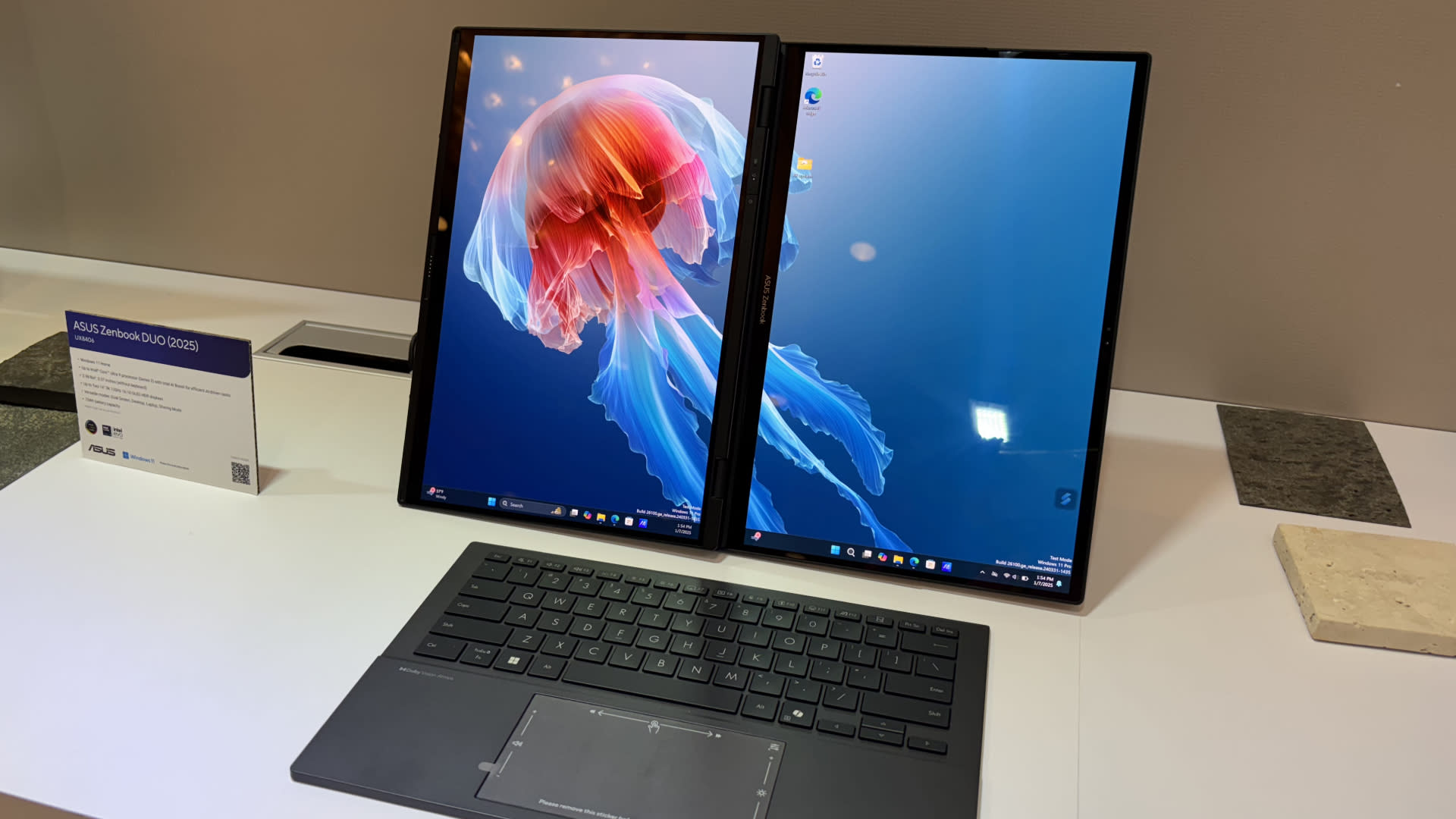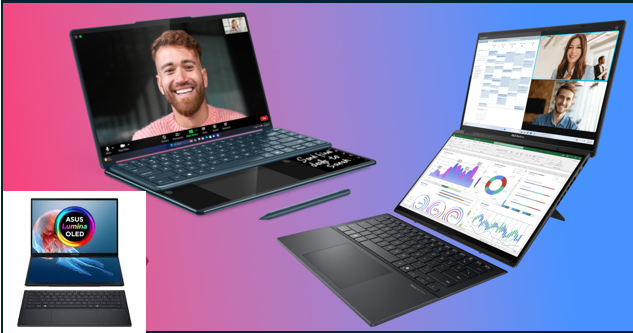The ASUS ZenBook Duo 2025 introduces dual 3K OLED touchscreens, AI optimization, and adaptive productivity tools. Here’s how this laptop makes multitasking effortless — and where it still struggles.
A Laptop That Doubles Down on Innovation

When ASUS released the first ZenBook Duo, it was more curiosity than necessity. Two screens? It felt futuristic but niche.
Fast forward to 2025 — the ASUS ZenBook Duo (UX8506) has become a serious productivity powerhouse, now powered by Intel Core Ultra processors with built-in AI NPUs, smarter thermal control, and two dazzling 14-inch 3K OLED panels that fold, detach, or stand vertically.
This isn’t a gimmick anymore. It’s a portable AI workstation built for creators, coders, and multitaskers who thrive on visual space.
How It Works in Real Life
Imagine this: you’re editing a video on the top screen while your bottom display hosts the timeline and color controls. Or you’re writing on one screen while referencing notes, charts, and browser tabs below. The AI optimization engine automatically resizes windows, predicts your layout habits, and suggests app pairings.
In hybrid mode, you can detach the keyboard, prop the screens upright like twin monitors, and connect a stylus for tablet-style sketching. The result? A laptop that feels like a desktop without the desk.
For developers and designers, the AI scheduling engine allocates performance power dynamically — focusing CPU and GPU resources where it senses workflow intensity, improving responsiveness by up to 30% over last year’s Duo.
The Everyday Benefits

The ZenBook Duo isn’t just flash — it’s practical brilliance.
- AI performance boost: Intel’s built-in NPU enhances background tasks, rendering, and multitasking.
- OLED visuals: Vibrant, color-accurate, and gentle on eyes during long work sessions.
- ErgoLift hinge 2.0: Lifts and angles screens for natural posture.
- Detachable Bluetooth keyboard: Transforms between laptop, workstation, and creative canvas.
- Portability: Despite two screens, it’s only 1.35 kg, lighter than many single-screen ultrabooks.
It’s the rare device that makes productivity feel creative.
Drawbacks to Consider

Of course, innovation comes at a cost — literally and figuratively. The battery life is the biggest trade-off: dual OLEDs drain power fast, delivering about 7–8 hours on single-screen mode or 4–5 hours on dual-display use.
The touchpad feels cramped when the keyboard’s attached, and the software learning curve is real. Some apps still don’t scale gracefully across two screens. And priced around $2,099, this is a premium device for serious users, not casual typists.
Pros and Cons
Pros: Dual 3K OLED screens; intelligent AI optimization; detachable design; powerful NPU-enhanced chip; superior build quality.
Cons: Pricey; short dual-screen battery life; occasional app-scaling quirks; compact touchpad.
Quick Verdict & Star Ratings
| Category | Rating | Notes |
| Design & Display | ★★★★★ | Gorgeous dual OLEDs with smart hinges. |
| Performance & AI | ★★★★☆ | Fast, intuitive optimization with NPU edge. |
| Battery & Portability | ★★★☆ | Acceptable but limited in dual mode. |
| Productivity Features | ★★★★★ | Truly transforms multitasking workflows. |
| Value | ★★★★☆ | Expensive, but worth it for creative pros. |
The ASUS ZenBook Duo 2025 is a statement device — one that merges power, flexibility, and smart design. It’s not for everyone, but for professionals who live in multiple apps at once, it’s the most futuristic laptop you can actually buy.
AI finally makes dual-screen computing feel natural — and that’s the mark of real innovation.
















